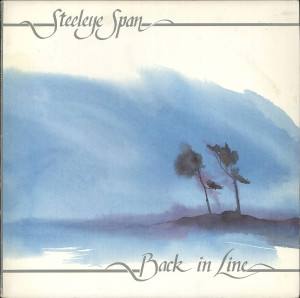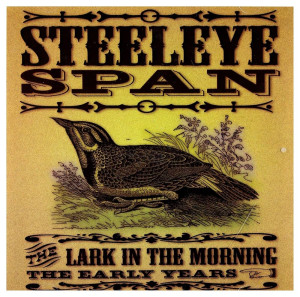Recording 101: How To Wreck A Good CD With Bad Production
 Well, damn it. I’ve just finished a complete listen to Steeleye Span’s 1986 Back In Line, and I’m cranky. Frankly, I want to take the producer out behind Maddy Prior’s barn and issue a cluesticking. Back In Line is an album with some excellent songs, solid to world-class musicians, one of the world’s best vocalists, and absolutely no energy. And that’s down to the production. John Acock, who produced this thing, blew it.
Well, damn it. I’ve just finished a complete listen to Steeleye Span’s 1986 Back In Line, and I’m cranky. Frankly, I want to take the producer out behind Maddy Prior’s barn and issue a cluesticking. Back In Line is an album with some excellent songs, solid to world-class musicians, one of the world’s best vocalists, and absolutely no energy. And that’s down to the production. John Acock, who produced this thing, blew it.
There’s a fine but very distinct line between “clean” and “bloodless.” The production on Back In Line crosses over, disappears and nearly fades out entirely.
I’ve long loved some of the songs off this one. It’s been around for nearly a quarter century; the gorgeous instrumental “Canon By Telemann” and “White Man,” with its real-world lyrics that manage to be as bardic as any traditional song, are staples in my iTunes library. But this was the first time I’ve sat down and listened to it as a single continuous work. And I’m really damned cranky. So here are a couple of notes.
First note: when you’re riding a wave of musical energy, do not suddenly slow down to a stately, prog rock-like drone. That defeats the purpose. Besides, it’s boring. That slowdown happens all over Back In Line.
Second note: a producer should be able to tell when s/he has just been handed a song designed to raise every hair on the listener’s neck. This is especially true if the band in question is legendary for at least one song with precisely that magical property. (Can you say, “Gaudete,” class? Of course you can.) Back In Line‘s “Lanercost” is one of those: it has the same power, the same uncanny punch, the same dark magic behind it. It should sound as if some unearthly choir was spiralling off the corbelling and buttresses in a medieval cathedral, with Maddy’s voice, chilling and emphatic and somehow terrifyingly pure, leading the charge. Instead, the production on  Back In Line offers it up as something the childrens’ choir might be singing at a church picnic. Where in hell is the power? Lost in the production.
Back In Line offers it up as something the childrens’ choir might be singing at a church picnic. Where in hell is the power? Lost in the production.
Okay. With my points made, I’m soothing my soul by switching over to the Steeleye anthology The Lark in the Morning. This does not only what I wanted, but what I expected of it: it brings me the best of Steeleye Span, done properly.
I’m not really reviewing this one; anthologies are what they are, and it’s all been said. What could I possibly add about “The Boys of Bedlam,” or “The Blacksmith,” or “When I was on Horseback,” that hasn’t already been said? All I can do is add my love and gratitude for Steeleye’s coverage of the material.
You can contrast the cuts on Lark from Please To See the King and Ten Man Mop, which are my two favourite Steeleyes and also happen to be almost perfectly produced albums, with the production on Back In Line. I just wouldn’t suggest it if you have high blood pressure issues, because it really is infuriating. All the passion, the strengths with which superb songs and Maddy’s voice could be coupled, are there and evident on The Lark in the Morning.
It’s always sad when a great band hits the studio with the makings of a great album and comes away with less than that because the production doesn’t fit. My love for Steeleye remains unwavering and steadfast – but Back In Line didn’t work for me.
I’ll just be over here, listening to “The Gower Wassail.”
(Park Records, 1986)
(Park Records, 2009)
